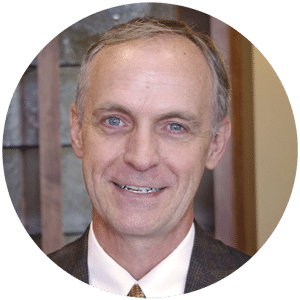NoCo Real Estate Summit: COVID pandemic worsens affordable-housing dilemma
Creating enough affordable housing to meet demand posed a challenge for Northern Colorado communities long before COVID-19. Now, the pandemic has introduced new difficulties in closing the gap between inventory, renters and homebuyers.
Panelists in the “Hurdles to Affordability” session of the virtual Northern Colorado Real Estate Summit Thursday morning examined the extensive barriers to addressing the affordable-housing shortage in Northern Colorado. Panelists included Kim Duty, senior vice president of public affairs and industry initiatives for the National Multifamily Housing Council; Mike Welty, vice president of homebuilding for Hartford Homes LLC in Northern Colorado; and Kristin Fritz, chief real estate development officer of Housing Catalyst, the housing authority of Fort Collins. Tasha Power, partner of Boulder’s Berg Hill Greenleaf Ruscitti LLP, moderated.
NMHC is an apartment trade association focusing on federal advocacy. Duty said that the Great Recession, from 2007 to 2009, created the “perfect storm” for the affordable-housing challenge that afflicts Northern Colorado and other regions around the U.S.
SPONSORED CONTENT
The last economic fallout, she said, resulted in increasing land, labor and construction costs, costly regulations and stagnant incomes for the middle and lower-income households.
“When you put all of those together, essentially we’ve made it impossible for the private sector to deliver housing that many working families can afford,” Duty said.
Duty added that prior to the Great Recession, the market experienced challenges in meeting the price points of mostly low-income households. From 2000 to 2016, the number of middle-income renters that were paying more than 30% of their income jumped 129%, she said.
Red tape blocks off the “missing middle,” or the needed multi-family units that are killed by single-family zoning laws, Duty said. A recent study estimated that 32% of development cost is from complying with state, federal and local regulations, she said.
The COVID-19 pandemic adds another obstacle, slowing construction. A NMHC study from May found that 53% of respondents experienced construction delays as a result of the pandemic, and 78% said they experienced delayed starts.
“It was an affordable-housing struggle before. It’s going to be even worse now,” Duty said. “I think it’s going to take a whole lot of original thinking to figure out how to avoid turning this economic and health crisis into a housing crisis, too.”
Fort Collins set a goal in 2015 through the Affordable Housing Strategic Plan for 10% of the city’s housing stock to be affordable by 2040.
Welty built his career selling homes during the last economic downturn. He said that the city would need 8,700 affordable homes to meet its 2040 goal, up from the current 3,000.
Welty looked at 2019 average prices for single-family homes and townhouses at Hartford Homes at Mosaic, a Fort Collins community. The average single-family price was $425,000, and townhomes were $360,000. He estimated that based on affordability definitions — typically 80% to 60% or less of the area median income — Fort Collins houses will need to fall under $270,000.
“When you consider an average gap of $175,000, this really does turn into a billion-dollar challenge for the city of Fort Collins, for developers and really just for everybody who’s trying to partner together to close that gap in affordable housing,” he said.
Welty said that creating metro districts and lowering developer costs is one solution to help the homebuyer.
Hartford Homes built The Condos at Enchantment Ridge in Loveland, where 20% of the 60 units were affordable housing. That was accomplished from an agreement that froze building-permit fees at 1999 levels.
Fritz said that one of the greatest challenges to creating affordable housing is density-level restrictions.
Fritz said some of Housing Catalyst’s projects that were built out with 12 units per acre could have saved costs if it was bumped up to 20.
“What happens there is that we’re really leaving some units off the table. If we were able to increase the density and some of the available land in our community, we would be able to achieve a greater amount of affordable housing,” Fritz said.
She added that there’s a gap in resources. The city of Fort Collins’ current private activity bond amount could yield around 60 units of affordable housing per year, Fritz said. To meet the 2040 objective, 300 houses need to be built each year.
Other resources for development are allocated from private investment from the Low-Income Housing Tax Credit program, community development block grants and home dollars, and various gap funding. She said that these resources are limited and difficult to obtain.
“We need to be thinking about, how do we reduce the cost to build these units?” Fritz said. “And then, what are we doing to increase the resources that can go towards affordable housing? I think what we’re seeing is that without both of these things, we are going to continue to see a gap in meeting the goals of the community.”
Creating enough affordable housing to meet demand posed a challenge for Northern Colorado communities long before COVID-19. Now, the pandemic has introduced new difficulties in closing the gap between inventory, renters and homebuyers.
Panelists in the “Hurdles to Affordability” session of the virtual Northern Colorado Real Estate Summit Thursday morning examined the extensive barriers to addressing the affordable-housing shortage in Northern Colorado. Panelists included Kim Duty, senior vice president of public affairs and industry initiatives for the National Multifamily Housing Council; Mike Welty, vice president of homebuilding for Hartford Homes LLC in Northern Colorado; and Kristin Fritz,…

